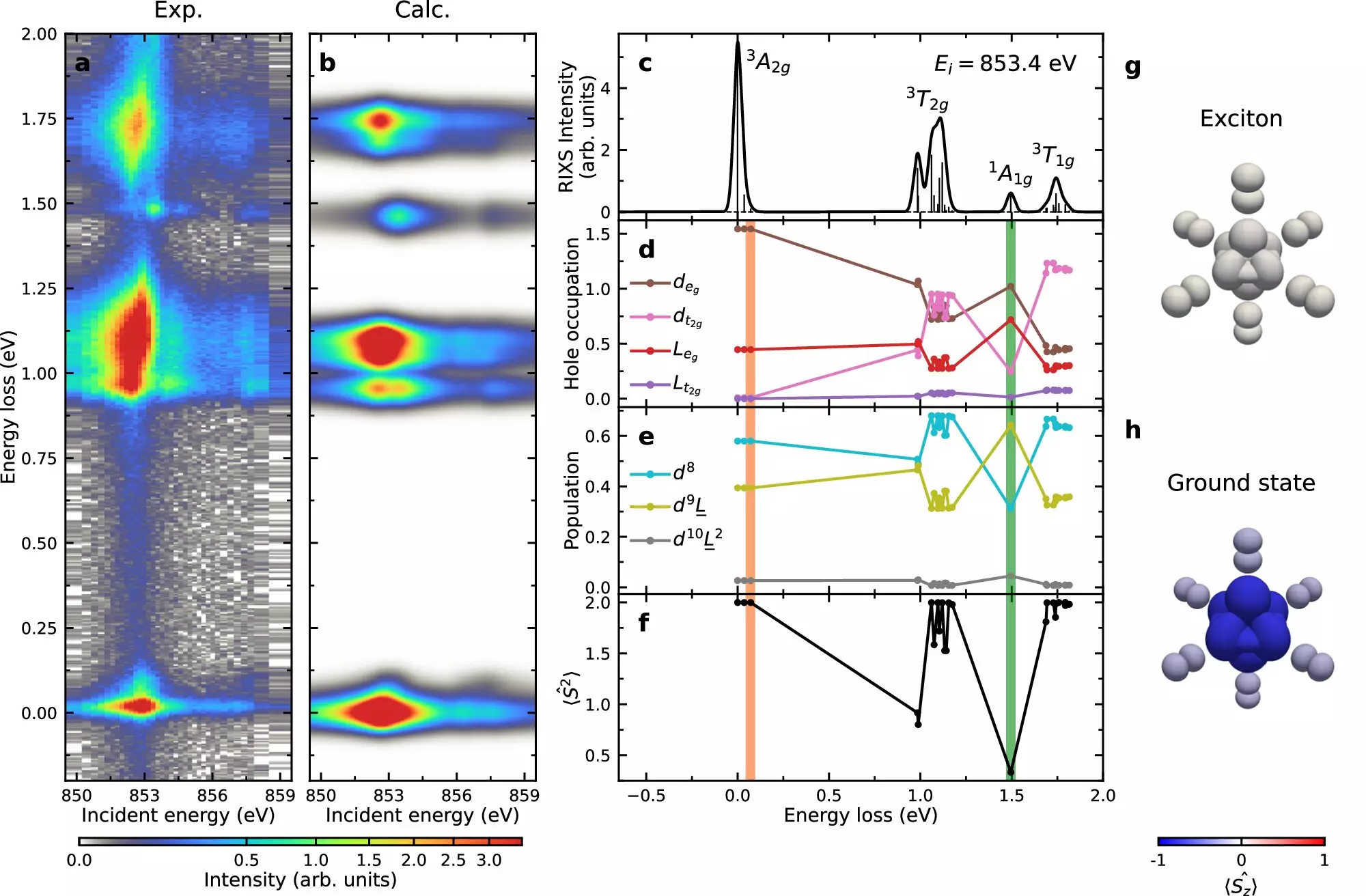Excitons, the mobile, microscopic particle-like objects, have long fascinated scientists due to their potential impact on developing new technologies based on magnetism. A research group led by scientists at the U.S. Department of Energy’s (DOE) Brookhaven National Laboratory has recently uncovered crucial details about the formation and behavior of excitons in a class of materials known as van der Waals magnets. This groundbreaking study, published in the journal Nature Communications, sheds light on the intricate relationship between the optical and magnetic properties of these materials, opening up possibilities for future advancements.
In their research, the scientists focused on nickel phosphorus trisulfide (NiPS3), a crystalline material with unique properties. By utilizing the cutting-edge X-ray technique known as resonant inelastic X-ray scattering (RIXS) at the National Synchrotron Light Source II (NSLS-II), they were able to observe exciton formation and propagation through the NiPS3 crystal. The use of ultrabright X-ray beams allowed for a high-resolution analysis of the electronic properties of the material, providing valuable insights into the behavior of excitons.
Excitons consist of an electron and a “hole” in a crystal, behaving as a coupled unit and moving together. The researchers discovered that exciton formation in NiPS3 is governed by the Hund’s exchange interaction, a physics principle that dictates the energy of electron spin configurations. This interaction provides the energy needed for excitons to form in the material. Furthermore, the study revealed that excitons disperse through the crystal in a manner similar to a spin disturbance known as a “double-magnon,” highlighting the complex interplay between electronic and magnetic behaviors in van der Waals magnets.
As advancements in instrumentation and techniques like RIXS and electron microscopy continue to evolve, researchers anticipate even greater insights into materials like NiPS3. Postdoctoral researcher Wei He, the first author of the study, expressed optimism about the future, stating that improved measurements of NiPS3 will be possible in the coming years. This ongoing research holds promise for further unraveling the mysteries of excitons and their implications for the development of innovative technologies based on magnetism.
The study conducted by the research group at Brookhaven National Laboratory represents a significant step forward in our understanding of excitons in van der Waals magnets. By utilizing state-of-the-art techniques and equipment, the scientists were able to unveil key details about exciton formation and behavior in NiPS3, offering valuable insights into the complex relationship between optics and magnetism. This research not only contributes to fundamental science but also holds potential for future technological advancements in areas such as information storage. Excitons continue to captivate researchers with their unique properties, paving the way for exciting discoveries in the field of materials science.


Leave a Reply